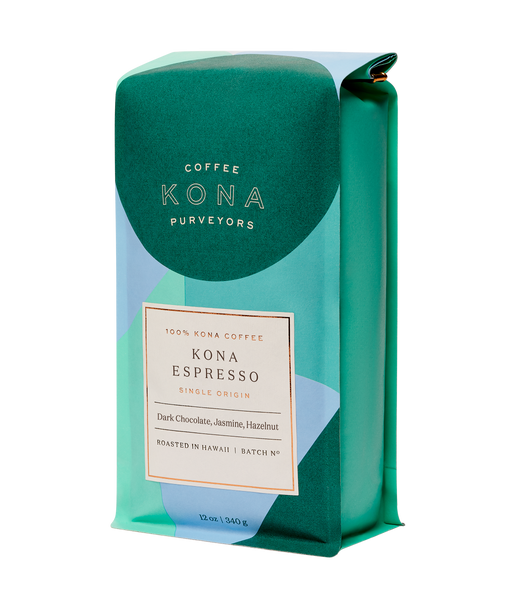Enjoying Food and Desserts with SOE Single Origin Espresso
Enjoying Food and Desserts with SOE Single Origin Espresso
Blog Article
Recognizing Coffee Beans: the Journey From Coffee to Blended Coffee Beans

The Beginnings of Coffee: A Worldwide Point Of View
While you may think of coffee as a contemporary staple, its beginnings trace back centuries, linking with cultures throughout the globe. The story starts in Ethiopia, where legend claims a goat herder called Kaldi discovered the invigorating impacts of coffee beans after observing his goats frolicking energetically after consuming them.
As profession routes broadened, coffee made its way to Europe in the 17th century, swiftly getting popularity. Each culture included its one-of-a-kind twist to coffee prep work, enhancing its history.
Farming and Harvesting of Espresso Beans
As coffee's trip evolved, the focus moved to the cultivation and harvesting of certain bean varieties, especially those used for coffee. You'll find that espresso beans usually come from Arabica or Robusta plants, each offering unique tastes. The ideal growing conditions include high altitudes and rich, well-drained dirt, which boost the beans' top quality.
Throughout the harvest, choosing techniques differ. In some areas, employees hand-pick ripe cherries, making sure only the very best fruit mosts likely to handling. In other locations, mechanical farmers are made use of, especially on bigger ranches. Timing is essential; you intend to collect when the cherries reach peak ripeness for maximum taste.
As soon as gathered, the beans are prepared for handling, which is crucial in establishing their final taste. Understanding the farming and gathering procedures provides you understanding right into what enters into your favored espresso, improving your gratitude for each and every mug.
Handling Techniques: From Cherry to Bean
Now that you have actually discovered about gathering espresso beans, allow's explore just how those cherries transform right into the coffee beans you love. You'll see exactly how various harvesting methods influence flavor, adhered to by the important actions of fermentation and drying. Ultimately, we'll break down the milling and grading procedure that identifies your coffee's quality.
Gathering Strategies Discussed
When it comes to coffee, recognizing harvesting methods is essential, because they straight affect the flavor and top quality of the beans you appreciate. Discerning picking entails hand-picking only ripe cherries, guaranteeing you get the best top quality beans. Inevitably, the option of harvesting method can significantly influence your coffee experience, so it's worth recognizing how those beans made it to your mug.
Fermentation and Drying
After gathering, the following actions in processing coffee beans play a considerable function fit their flavor. You'll find that fermentation is vital, as it helps break down the mucilage surrounding the beans, boosting their taste account. Depending on the approach, this procedure can last from a couple of hours to a number of days, with differing outcomes based upon temperature and moisture.
When fermentation is complete, drying out complies with, which is equally important. You can pick from mechanical or sun-drying drying techniques. Sun-drying allows the beans to soak up flavors from the environment, while mechanical drying guarantees consistent dampness degrees despite climate. Appropriate drying is important to stop mold and mildew and protect the beans' high quality, inevitably affecting your mug of coffee.
Milling and Grading Refine
As fermentation and drying established the phase for flavor growth, the milling and grading process guarantees that just the very best coffee beans make it to your mug. This stage involves removing the external layers of the coffee cherry, including the parchment and husk. After milling, the beans are sorted by size and weight, ensuring a consistent high quality. You'll find that grading aids recognize flaws and classify beans, which impacts flavor and aroma. Top notch beans obtain a higher quality, leading to a richer coffee experience. As soon as rated, the beans await product packaging and delivery, protecting their unique attributes. This precise procedure is crucial for providing the phenomenal preference you enjoy in every sip of your favored brew.
Roasting Techniques: Unlocking Flavor Potential
When you roast coffee beans, the method you choose can considerably influence the flavor profile. Understanding the relationship between time, temperature, and roasting methods is key to revealing the capacity of your mixture. Let's explore just how these components collaborated to produce the ideal cup.
Roasting Approaches Clarified
While you may assume that all coffee roasting approaches yield the very same results, the reality is that each technique exposes unique taste potentials in the beans. Drum toasting utilizes a rotating drum to equally distribute warmth, improving caramelization and generating a balanced taste. Air roasting, on the various other hand, circulates hot air these details around the beans, advertising a lighter roast with noticable acidity.

Influence On Flavor Account
Different toasting methods not just affect the process however additionally considerably affect the flavor profile of the coffee beans. When you pick a light roast, you'll experience bright acidity and flower notes, showcasing the bean's beginning. In comparison, a medium roast balances level of acidity with sweet taste, commonly revealing chocolatey undertones. Dark roasts, on the various other hand, highlight bold, great smoky tastes, in some cases concealing the bean's one-of-a-kind characteristics. Each method discloses various oils and compounds, resulting in a vast array of flavors. By try out different roasting designs, you can uncover which profiles reverberate with your taste. Recognizing these nuances assists you appreciate the artistry behind your cup of coffee, improving your total experience with every sip.
Time and Temperature Aspects
To release the full flavor potential of coffee beans, both time and temperature during the toasting procedure play substantial duties. When toasting, you'll discover that greater temperatures can swiftly create tastes, yet if you rush it, you may finish up with burnt notes. Conversely, lower temperature levels enable an extra progressive taste development, showcasing the beans' unique characteristics.

Timing is just as important; expanding the roast as well long can result in a loss of acidity and illumination, while too short a roast might leave the beans underdeveloped. Locating that pleasant place calls for technique and experimentation. By readjusting these variables, you can reveal the rich, complicated flavors hidden within each bean, producing an absolutely exceptional coffee experience.
The Art of Mixing: Crafting One-of-a-kind Coffee Profiles

Begin by picking a base coffee that provides a solid foundation. Select complementary beans to improve details taste notes. A bright Ethiopian bean can bring fruitiness, while a rich Brazilian coffee includes body. Trial and error is key-- don't be terrified to readjust proportions until you find your excellent profile.
As you blend, bear in mind that each combination narrates. You're not simply making coffee; you're developing an experience. Take your time, preference often, and take pleasure in the trip of finding your signature blend - Single Origin Espresso.
Brewing Methods: How Preparation Affects Flavor
Mixing coffee opens up a domain of flavor possibilities, yet how you make that mix can considerably influence your final mug. On the other hand, a pour-over highlights the coffee's quality and brightness, excellent for showcasing delicate notes.
Coffee, with its high pressure, generates a concentrated shot that accentuates sweet taste and crema. If you prefer a lighter mixture, consider a cool brew approach; it generates a smooth, much less acidic taste.
Ultimately, trial and error is essential. Readjusting variables like water temperature level, grind size, and make time can transform your coffee's account. So, accept the art of brewing to uncover the tastes hidden in your coffee blends. The right method can elevate your experience to new heights.
The Future of Coffee: Sustainability and Development
As the coffee market evolves, sustainability and development are coming to be important for resolving environmental difficulties and conference customer needs. You'll discover that more coffee business are taking on eco-friendly methods, from sourcing beans fairly to applying lasting farming techniques. These shifts not only assist the world yet additionally enhance the quality of the coffee you delight in.
You may see technologies like biodegradable packaging and water-saving brewing techniques that minimize waste. Advanced modern technology, such as blockchain, is also becoming prominent, making sure openness in the supply chain, which permits you to map your coffee back to its origins.
In enhancement, spending in local neighborhoods and supporting farmers with fair profession campaigns promotes a more lasting coffee environment. As you drink your following mug, remember that your choices can add to a brighter future for coffee. By selecting lasting brand names, you're not simply taking pleasure in a drink; you're making a positive impact on the world.
Frequently Asked Inquiries
What Is the Difference Between Arabica and Robusta Beans?
Arabica beans are smoother, sweeter, and have a greater level of acidity, while robusta beans are stronger, more bitter, and include even more high levels of caffeine. You'll notice these differences in taste and fragrance when making your coffee.
Exactly How Does Altitude Affect Coffee Bean Taste?
Altitude impacts coffee bean taste significantly. Higher altitudes create beans with brighter acidity and complex tastes, while lower elevations commonly produce beans that are larger and much less nuanced. You'll observe these distinctions in your mug!
What Are the Health Conveniences of Drinking Coffee?
Drinking coffee can improve your energy, enhance psychological focus, and also enhance physical efficiency. It's abundant in antioxidants, might lower the threat of certain conditions, and can promote a much healthier metabolic rate when consumed in small amounts.
Can Coffee Beans Be Reused for Brewing?
Yes, you can recycle coffee beans for developing, but the flavor could be weak. If you appreciate trying out, attempt reusing them in different ways, like cold mixtures or including in shakes for an added kick.
Just how Should I Shop Coffee Beans for Freshness?
To keep your coffee beans fresh, store them in an impermeable container in a great, dark location. Avoid revealing them to heat, dampness, or light, as these aspects can quickly deteriorate their taste and aroma.
Recognizing Coffee Beans: the Journey From Coffee to Blended Coffee Beans.
Now that you have actually discovered regarding harvesting espresso beans, let's explore exactly how those cherries more info here transform into the coffee beans you like.When you roast coffee beans, the technique you select can dramatically impact the taste account - Single Origin Espresso.While you could assume that all coffee toasting approaches generate the very same outcomes, the fact is that each strategy discloses one-of-a-kind taste possibilities in the beans.Various toasting techniques not just affect the procedure however additionally greatly affect the flavor profile of the coffee beans
Report this page